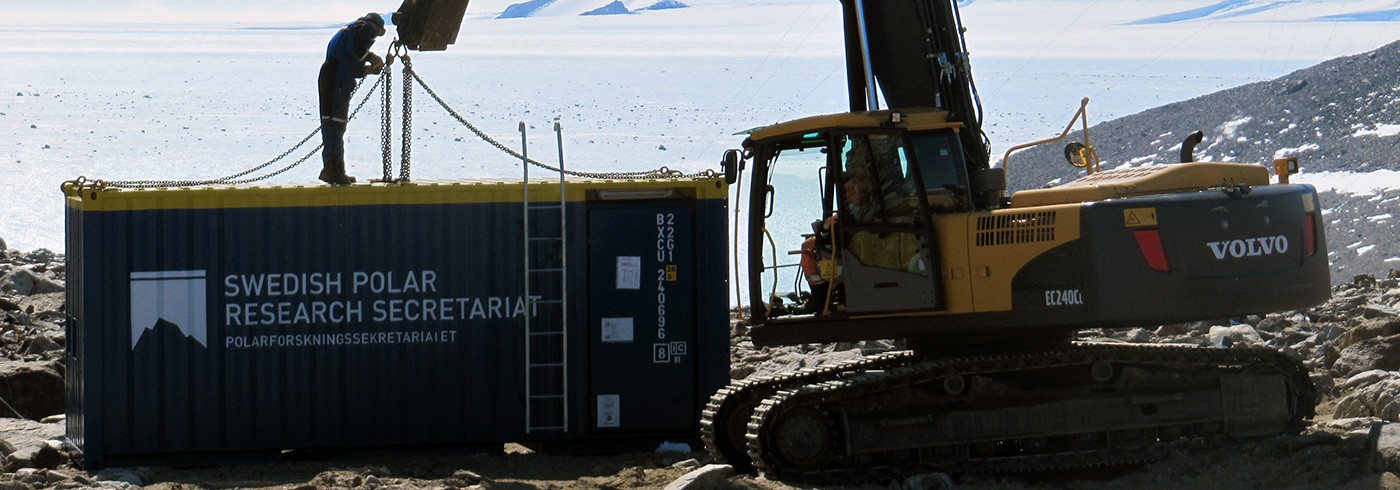MARA: Moveable Atmospheric Radar for Antarctica
16 November 2011 - 23 February 2012
The container to house the MARA electronics was moved into place by the Norwegian logistics team. Photo: Sheila Kirkwood
Do we really understand the global circulation of the upper 60–100 km of the atmosphere? Do small-scale processes cause significant mixing of air between different altitudes near the surface (0–15 km)?
An understanding of upper-atmospheric circulation is needed in order to interpret observed long-term changes and to improve climate predictions. Vertical mixing of air in the lower atmosphere could, for example, lead to the spread of cloud-condensation precursors to wider areas than expected, and to unexpected sources of trace gases in polar ice cores.

The MARA container and antenna-framework construction materials arriving at Troll after being unloaded from the supply ship at the ice edge 250 km farther north. Photo: Sheila Kirkwood
The phenomena we study are observed only at polar latitudes. The work was done at Troll Research Station, which is situated at a high geographic but low geomagnetic latitude. This allows conditions at altitudes of up to 100 km to be studied with minimal interference from geomagnetic disturbances. At lower altitudes, conditions at Troll are strongly influenced by the local topography, i.e., the edge of the Antarctic plateau and the steep ridges and cliffs of the mountains surrounding the station.

Moveable Atmospheric Radar for Antarctica (MARA) at Troll Research Station in January 2012. Photo: Sheila Kirkwood
Our primary instrument was a 54 MHz radar, which measured atmospheric structure, turbulence, and winds at altitudes of 1–15 km and 80–95 km. In addition, one radiosonde was flown to an altitude of up to 25 km to validate the radar measurements.
Preliminary results for the 80–95 km altitude region confirm previous seasons’ results that there are shortcomings in our understanding of middle-atmospheric circulation in the southern hemisphere. They also indicate that the atmospheric composition influences the radar signal strength more than previously recognised. At altitudes of 500–15,000 m, we identified several mechanisms leading to strong vertical mixing (i.e., tropopause folds, turbulence associated with cloud-top cooling, surface heating, and mountain-wave breaking). Radar observations at Troll will continue until early 2014 to allow a climatology of these processes to be compiled.

Some adjustment was needed for the new Yagi antennas in the first snowstorms of the season. Photo: Ingemar Wolf
Two papers using MARA measurements from 2012 have been submitted for publication, and a further two are in preparation. A real-time data display and overview plots of the measurements to date are available on our website (see below). For digital data, contact sheila.kirkwood@irf.se.

